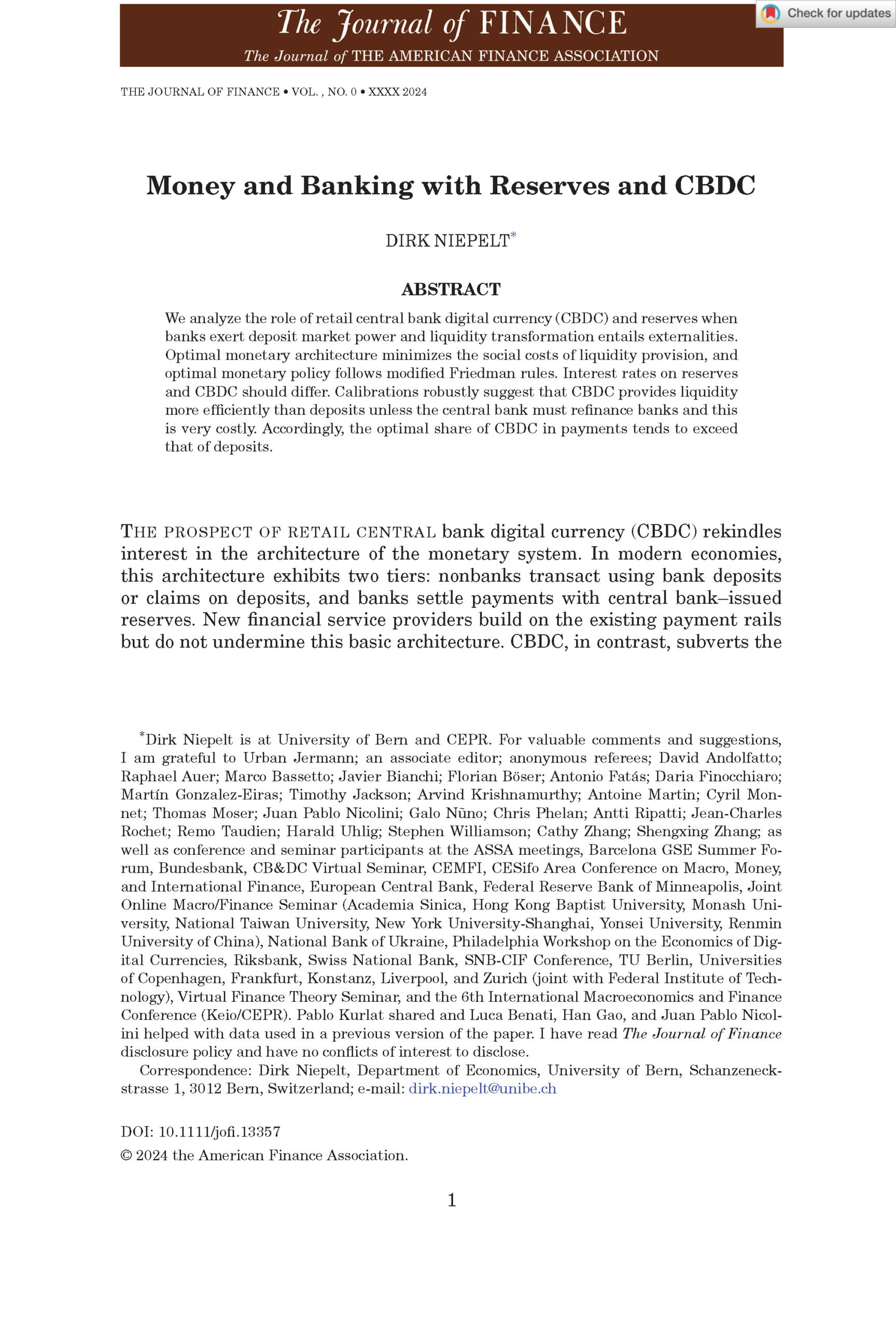Journal of Finance. HTML (local copy). Abstract: We analyze the role of retail central bank digital currency (CBDC) and reserves when banks exert deposit market power and liquidity transformation entails externalities. Optimal monetary architecture minimizes the social costs of liquidity provision and optimal monetary policy follows modified Friedman rules. Interest rates on reserves and CBDC should differ. Calibrations robustly suggest that CBDC provides liquidity more efficiently than deposits unless the central bank must refinance banks and this is very costly. Accordingly, the optimal share of CBDC in payments tends to exceed that of deposits.
Topics:
Dirk Niepelt considers the following as important: Central bank digital currency, Friedman rule, Inside money, interest, Liquidity, Money, money creation, Research, Seignorage
This could be interesting, too:
Dirk Niepelt writes Does the US Administration Prohibit the Use of Reserves?
Dirk Niepelt writes “Pricing Liquidity Support: A PLB for Switzerland” (with Cyril Monnet and Remo Taudien), UniBe DP, 2025
Keith Weiner writes The Anti-Concepts of Money: Conclusion
Dirk Niepelt writes Bank of England CBDC Academic Advisory Group
Journal of Finance. HTML (local copy).
Abstract:
We analyze the role of retail central bank digital currency (CBDC) and reserves when banks exert deposit market power and liquidity transformation entails externalities. Optimal monetary architecture minimizes the social costs of liquidity provision and optimal monetary policy follows modified Friedman rules. Interest rates on reserves and CBDC should differ. Calibrations robustly suggest that CBDC provides liquidity more efficiently than deposits unless the central bank must refinance banks and this is very costly. Accordingly, the optimal share of CBDC in payments tends to exceed that of deposits.

